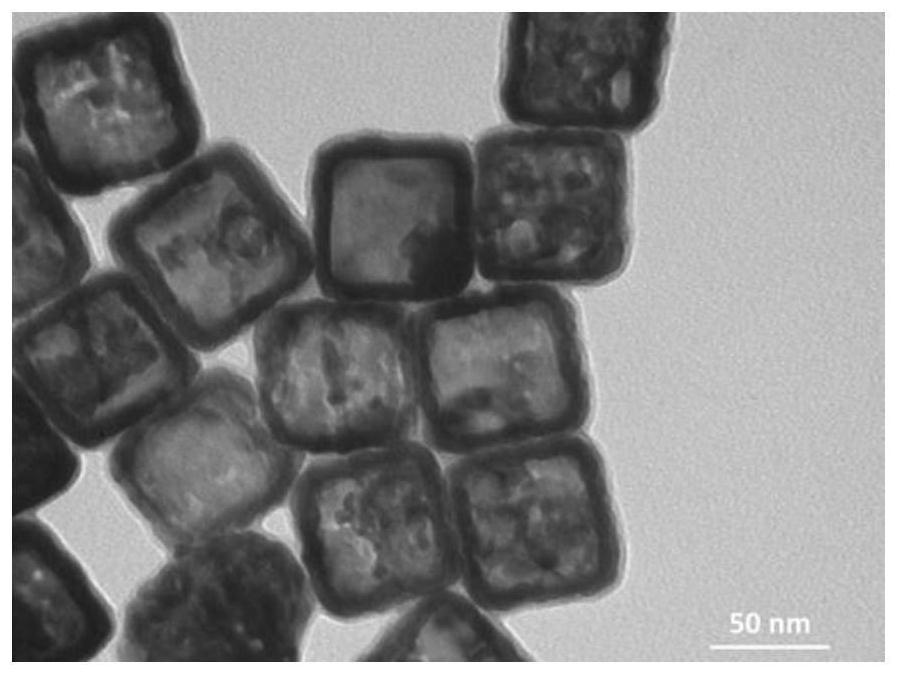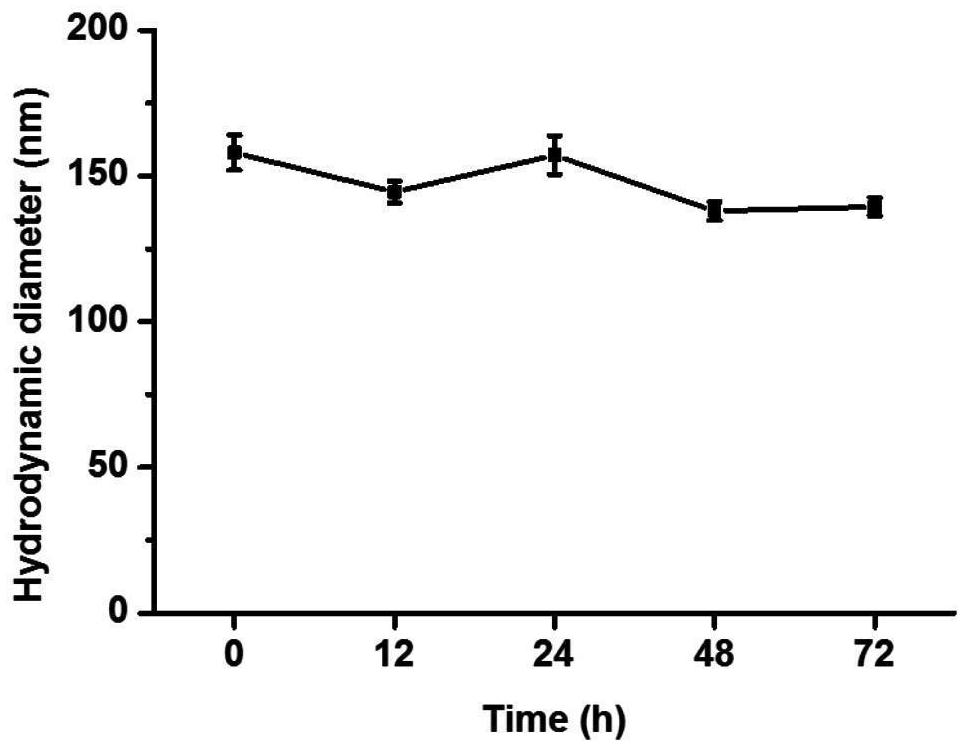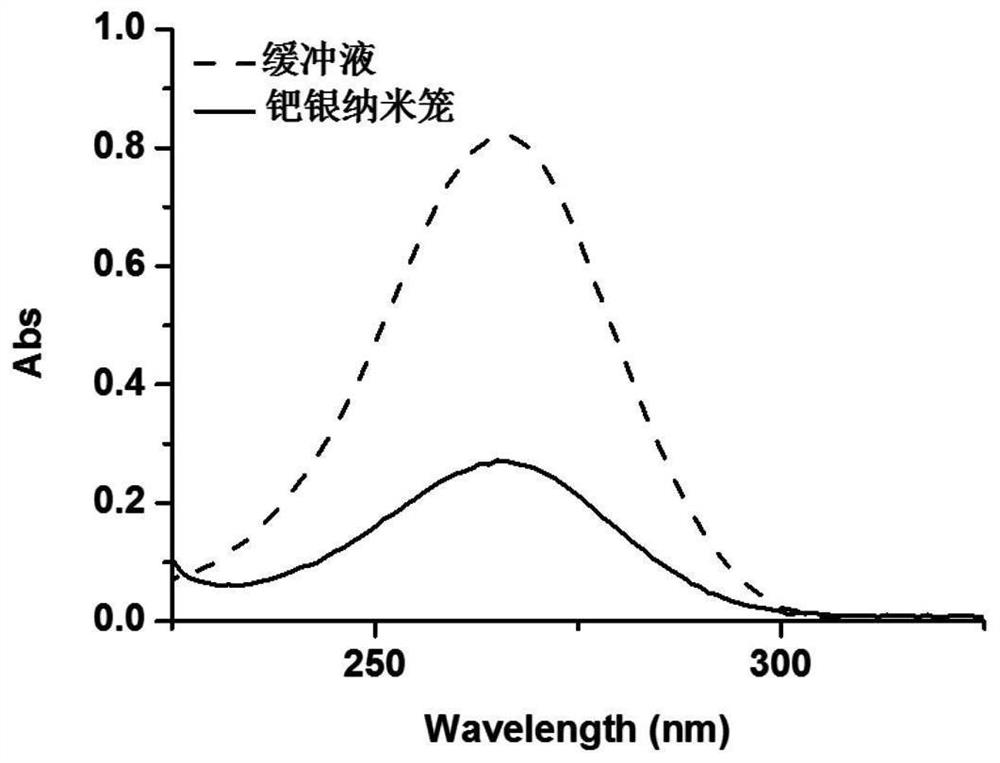Palladium-silver nanoparticles and application and preparation method thereof
A silver nanoparticle and nanoparticle technology, applied in the field of antibacterial, can solve the problems of limiting the potential application scenarios and action efficiency of artificial peroxidase, the inability to add hydrogen peroxide, and biological toxicity, so as to reduce the possibility of drug resistance, Stable and long-lasting antibacterial effect with low cost
- Summary
- Abstract
- Description
- Claims
- Application Information
AI Technical Summary
Problems solved by technology
Method used
Image
Examples
Embodiment 1
[0072] 1. Add hydrogen chloride solution and 100 mg polyvinylpyrrolidone to sodium bisulfide (0.04 mg) ethylene glycol solution (10 mL), mix well, add 99.67 mg of silver trifluoroacetate to obtain silver nanoparticles. Silver nanoparticles have a hexahedral structure. The size of the silver nanoparticles is around 50 nanometers.
[0073] 2. Mix 0.50 mg of silver nanoparticles with polyvinylpyrrolidone aqueous solution, heat (50° C.) and mix (10 minutes), add 0.14 to 2.82 mg of potassium chloropalladate to obtain palladium silver nanocages.
[0074] figure 1 Microstructure diagram of the palladium-silver nanocage artificial oxidase prepared for this example.
[0075] It can be seen that the size of the palladium-silver nanocage is about 70 nanometers.
[0076] The molar content of palladium in the palladium-silver nanocages is detected by ICP-MS to be 10%-60%.
Embodiment 2
[0078] 1. Add hydrogen chloride solution and 300 mg polyvinylpyrrolidone to sodium bisulfide (0.04 mg) ethylene glycol solution (30 mL), mix well, add 99.67 mg of silver trifluoroacetate to obtain silver nanoparticles. Silver nanoparticles have a hexahedral structure. The size of the silver nanoparticles is around 60 nanometers.
[0079] 2. Mix 0.50 mg of silver nanoparticles with polyvinylpyrrolidone aqueous solution, heat (100° C.) and mix (30 minutes), add 0.14 to 2.82 mg of potassium chloropalladate to obtain palladium silver nanocages.
[0080] After testing, the size of the palladium-silver nanocage is about 70 nanometers. The molar content of palladium in the palladium-silver nanocage is 10%-60%.
Embodiment 3
[0082] 1. Hydrogen chloride solution and 200mg polyvinylpyrrolidone were added to a diethylene glycol solution (10mL) of sodium sulfide (0.04mg), mixed evenly, and silver nitrate 99.67mg was added to obtain silver nanoparticles. Silver nanoparticles have a hexahedral structure. The size of the silver nanoparticles is around 60 nanometers.
[0083] 2. Mix 0.50 mg of silver nanoparticles with polyvinylpyrrolidone aqueous solution, heat (80° C.) and mix (20 minutes), add 0.14 to 2.82 mg of potassium chloropalladate to obtain palladium silver nanocages.
[0084] After testing, the size of the palladium-silver nanocage is about 70 nanometers. The molar content of palladium in the palladium-silver nano cage is 10%-60%.
PUM
| Property | Measurement | Unit |
|---|---|---|
| particle diameter | aaaaa | aaaaa |
| size | aaaaa | aaaaa |
| size | aaaaa | aaaaa |
Abstract
Description
Claims
Application Information
 Login to View More
Login to View More - R&D
- Intellectual Property
- Life Sciences
- Materials
- Tech Scout
- Unparalleled Data Quality
- Higher Quality Content
- 60% Fewer Hallucinations
Browse by: Latest US Patents, China's latest patents, Technical Efficacy Thesaurus, Application Domain, Technology Topic, Popular Technical Reports.
© 2025 PatSnap. All rights reserved.Legal|Privacy policy|Modern Slavery Act Transparency Statement|Sitemap|About US| Contact US: help@patsnap.com



